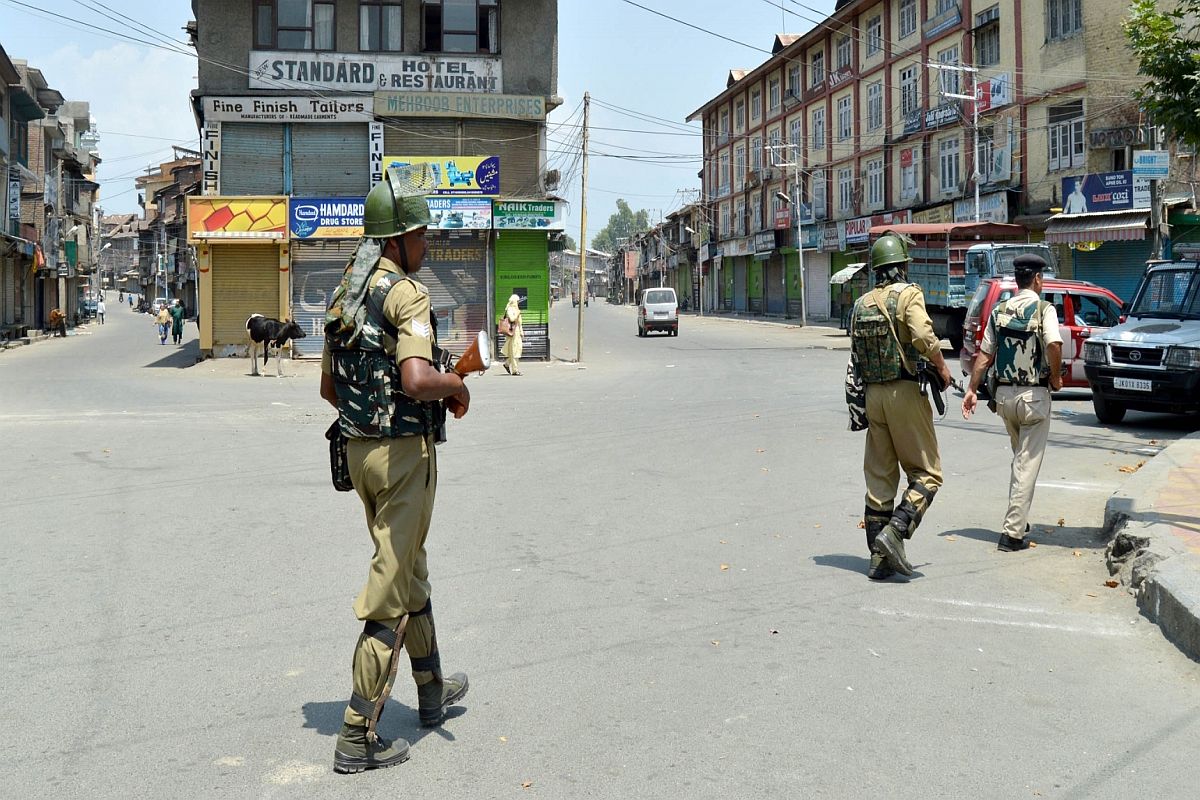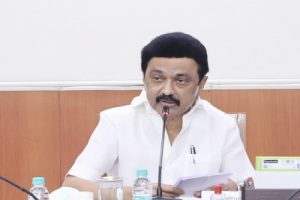On 5 August 2019 Indians were witness to another ‘surgical strike’, launched not by India’s defence forces, but by the Home Minister on Jammu and Kashmir that in one fell swoop divested it of its statehood and bifurcated it. This was done with extraordinary ‘diplomatic’ skill, first by passing resolutions in the two Houses of Parliament for abrogation of Article 370 (and Article 35A) of the Constitution and then bifurcating the former state into two Union Territories (UTs) ~ Jammu and Kashmir and Ladakh, through the passage of the Jammu and Kashmir Reorganisation Bill and securing the President’s consent in the shortest possible time. The legality of this action may be questioned, but since the matter is now under consideration of the Supreme Court, a discussion on the issue is not intended here.
The principal reasons offered by the government for abrogation of Article 370 (and Article 35A) were: (i) restoration of peace in Jammu and Kashmir by putting an end to militancy, and infiltration across the LoC from Pakistan occupied Kashmir (PoK), (ii) ending rule by the ‘dynastic and corrupt political elite’ and, (iii) acceleration of economic development of the State. Have these goals been achieved? If not, this question needs answers.
Advertisement
Outbreak of militancy in Kashmir in the aftermath of the killing of Burhan Wani in July 2016, was preceded by the malaise that plagued Kashmir’s politics for years ~ lack of good governance and mismanagement of financial resources; there was also support ~ diplomatic, moral and material ~ from Pakistan. The situation was fast moving out of control with almost daily killing of young militants. This had been paralleled by a sharp deterioration in India-Pakistan relations. The BJP-led NDA government in New Delhi seemed to be clueless about how militancy could be brought under control. It was keen to curb Kashmir’s autonomy by abolishing Articles 370 and 35A of the Constitution that sought to guarantee Kashmir’s internal autonomy and gave the power to the State Assembly (under Article 35A) to define who would be J&K’s permanent residents.
Only ‘permanent residents’ would be able to enjoy the privilege of participating in local elections and would be able to own land and other immovable properties, seek employment in government services, and secure admission to State-funded institutions of higher education. Article 35A stood in the way of Kashmir’s economic development, Home Minister Amit Shah told parliament, although many such ‘special’ rights are guaranteed to tribal populations in Himachal Pradesh and Assam, and in the Northeastern states of Arunachal Pradesh, Manipur, Mizoram, Nagaland and Sikkim under various sections of Article 371 of the Constitution. If these States could enjoy such privileges, what was wrong with Jammu and Kashmir doing so? There were of course some unjust and undemocratic laws prevalent in Kashmir framed by the State legislature under the authority given to it by Article 35A ~ like denial of benefits of permanent resident status to Kashmiri girls married to non- Kashmiris, or the denial of Permanent Resident Certificate (PRC) to the Valmikis who were brought to Jammu and Kashmir in 1957. As a result, they were denied the opportunity of upward social mobility and virtually condemned to be ‘sweepers’ to work under the Jammu Municipality, the Home Minister told parliament. Denial of PRC to the Valmikis resulting in loss of opportunities was, no doubt, bad; but truth to tell, even in 2020, position of Dalits in Gujarat and elsewhere is no better than that of Valmikis (Dalits) in J&K, despite all the rights guaranteed to them under the Constitution.
But revocation of Kashmir’s special status, by itself, could hardly be a solution for controlling militancy. The first and foremost thing should have been to begin a dialogue with all stakeholders including stone-pelting youths, as had been suggested by Lt. General Hooda with long experience of serving in Kashmir. Prime Minister Atal Behari Vajpayee did not hesitate to do this as was pointed out by Mehbooba Mufti, the former Chief Minister of Jammu and Kashmir. Economic development and creation of employment opportunities, along with good governance, would go a long way in reducing militancy. But to succeed in this endeavour, peoples’ trust had to be won.
Instead of taking measures to reduce the trust-deficit, the Union government decided to ‘integrate’ Jammu and Kashmir with the rest of India by abolishing its internal ‘autonomy’. The decision to revoke Article 370 was taken at a time when Kashmir was under President’s rule and there was no question of ascertaining people’s wishes, as the Governor’s concurrence with the decision to abrogate Article 370 could not reflect the wish of the people.
The decision to abrogate Article 370 had long been on the agenda of the BJP; it was also mentioned in its 2019 Election Manifesto. Preparations had been in the making since the appointment of Satya Pal Malik ~ an active political leader and a member of the BJP ~ as the Governor of Jammu and Kashmir, succeeding NN Vohra, in August 2018. The return of the BJP ~ and the NDA ~ to power in May 2019 with an absolute majority, provided the spur to act at a time when the Opposition was in disarray. Revocation of Article 370 and the government’s decision to shut down the State to prevent civil unrest, snap all telephone and internet connections, ostensibly for security reasons, and arrest/ detain thousands of people ~ separatists, leaders of mainstream political parties, including three former Chief Ministers, political activists, intellectuals and others ~ came as a shock to Kashmiris.
Absence of any official clarification from the government about the number of people arrested ~ more than 10,000, according to some reports ~ only helped the spread of rumours. To ensure ‘peace’ in the State, 8,000 additional CRPF personnel were deployed just before the revocation, taking the total number of security personnel deployed in the Valley to more than 75,000, making it ‘one trooper for every 100 citizens’, according to one commentator.
The government’s action stunned Kashmiris. For most of them the situation had never been as depressing and hopeless as it became in the aftermath of the revocation of J&K’s special status, and this has only served to widen the chasm between the people of Kashmir and the rest of India. Article 370 gave them at least a fig-leaf of autonomy, which was more symbolic than real, because prior to August 2019, out of the 97 subjects in the Central list, the laws passed by Parliament on as many as 94 items , were applicable to Jammu and Kashmir and out of 47 subjects in the Concurrent List, the laws passed by Parliament on 26 subjects were extended to J &K. Kashmiris feel that the revocation of Article 370, the bifurcation of the State into two UTs (albeit with the promise of restoring full statehood to J&K, once normalcy returns) and the decision to increase the number of seats in the new uni-cameral legislature of the UT, set up under the Jammu and Kashmir Reorganisation Act, 2019, from 87 in the previous Assembly (including 4 seats from Ladakh, 46 from the Kashmir Valley and 37 from Jammu), to 104, and ultimately to 114 after the delimitation exercise is completed, will further disempower them both ethnically and politically. These apprehensions are not entirely baseless.
The Union government’s security-oriented approach did not succeed in the past in dealing with the problems being faced by Kashmiris, on the contrary it was spurring militancy; nor will it succeed in future unless judicious steps are taken for amelioration of peoples’ grievances. For example, at least 45 youths joined the ranks of militants in Kashmir during January-May 2018 including an MBA and a Ph. D scholar. According to security officials, every funeral of a local militant spawned at least two additional militants. It became almost a bottomless pit. It is difficult to explain the reason for the sudden spurt in the growth of militancy. But as an Army officer explained, it could be the growing influence of pan-Islamisation and religious indoctrination ‘in which unemployment emerges as a catalytic agent for a quick reaction to pick up a gun’. This drift towards the hardcore pan-Islamic ideology, some observers feel, will make the task of controlling militancy that much more difficult, especially in the context of a recent UN report highlighting the presence of between 150-200 members from Bangladesh, India, Pakistan and Myanmar affiliated to the Al-Qaida increasing India’s security concerns.
(To be Concluded)
The writer is Professor (Retd.) of International Relations and Dean, Faculty of Arts, Jadavpur University.











